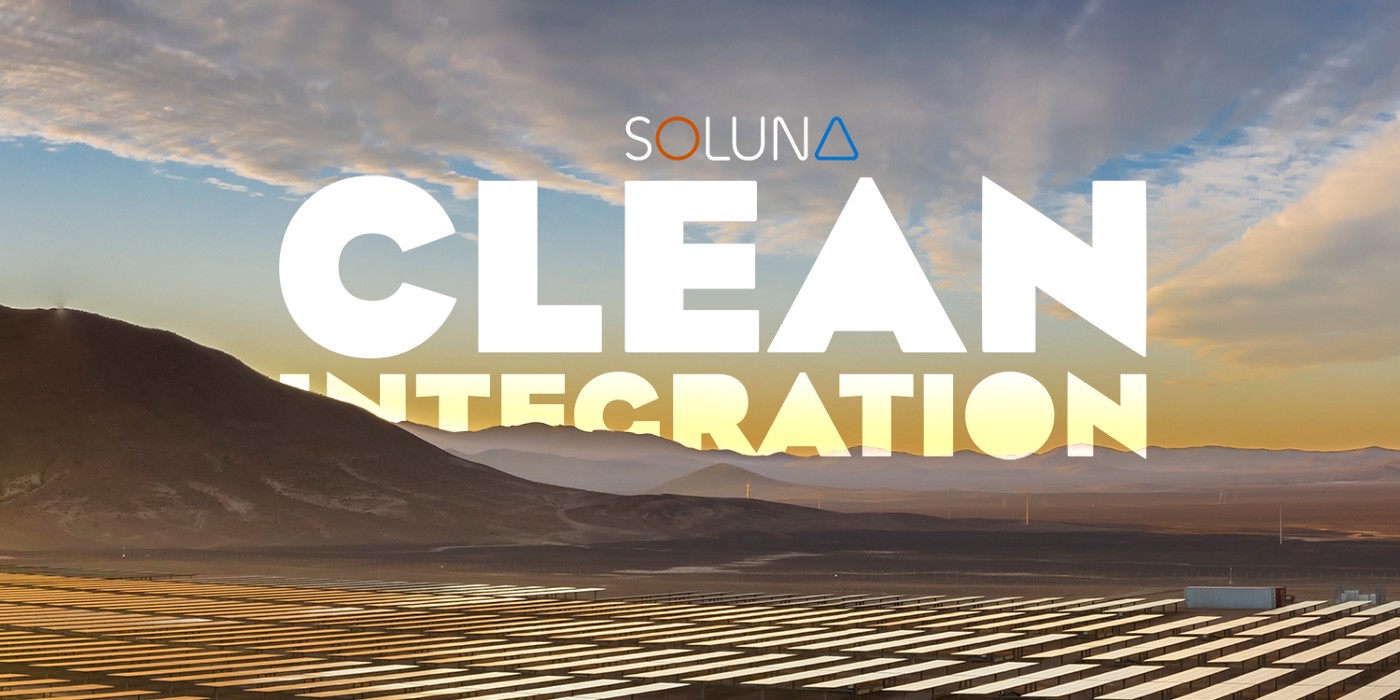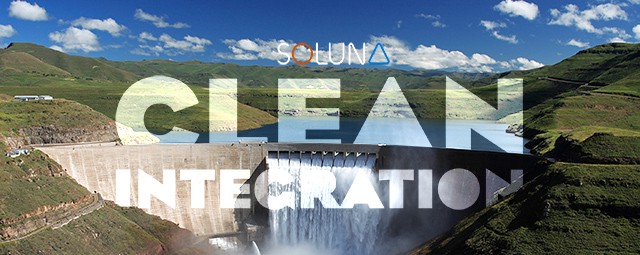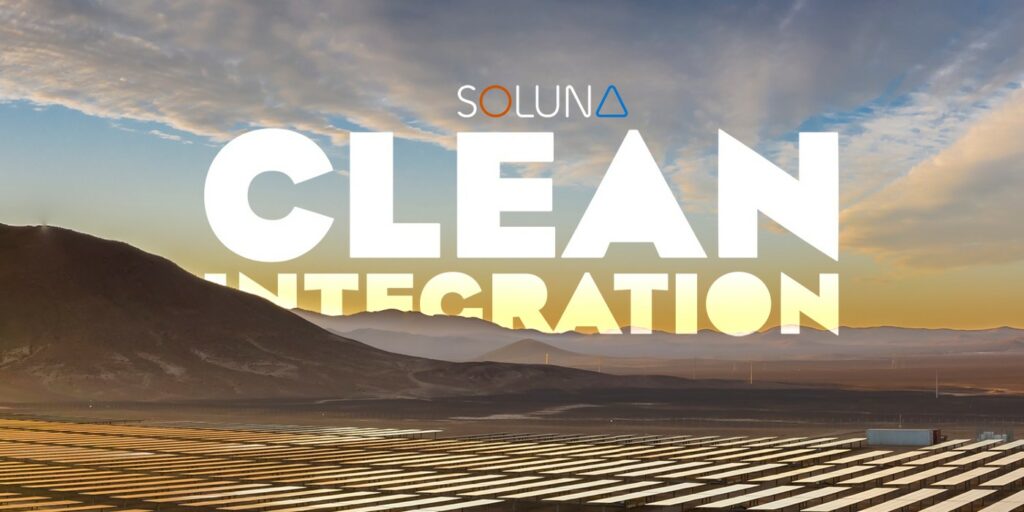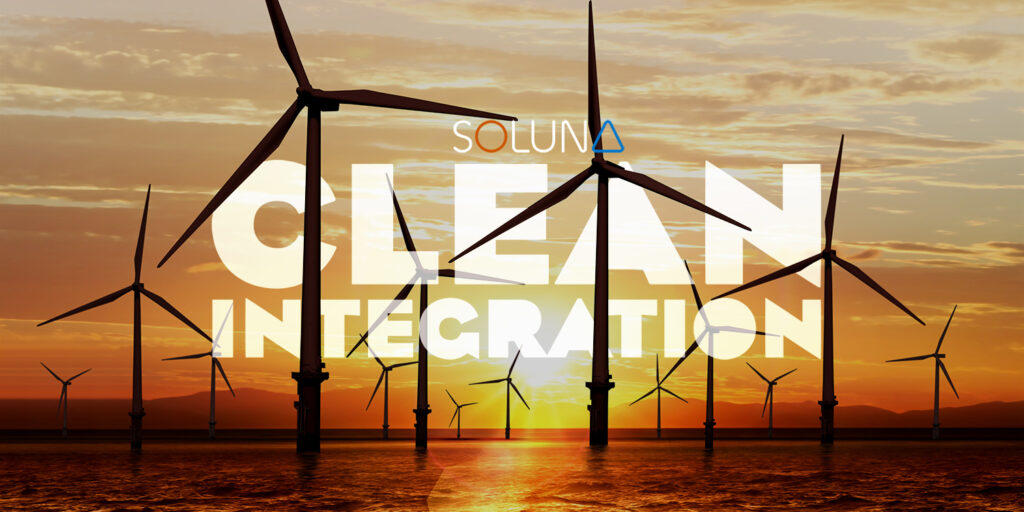Listen now on Apple | Spotify | SimpleCast
Soluna CEO John Belizaire sits down with Margot Paez, a fellow at the Bitcoin Policy Institute specializing in renewable energy and environmental studies, to discuss the need for education in both the policy and energy sectors around the potential for Bitcoin mining to catalyze clean energy development.
Margot is also currently a Ph.D. candidate in civil engineering at Georgia Tech with a focus on water resources and climate adaptation, as well as a graduate research assistant at the Georgia Water Resources Institute and a front-end developer.
Our team became acquainted with Margot when she moderated a panel on mining with renewables at the Bitcoin Conference in Miami earlier this year.
(This transcript has been edited and condensed for print.)
[1:32] So, Margot, I’m curious, what is your Ph.D. in? What is your thesis?
Margot Paez: My thesis, so far as I understand it, is a climate model. So it’s a statistical-based model and it uses sea surface temperatures. I do various fancy, magical statistical things with these sea surface temperatures. And I say that because it’s not published yet. So I can’t give all the details on how it works.
But ultimately, we can use these sea surface temperatures, create a statistical model from them, and then make predictions or forecasts of other climatic variables like rainfall. Usually, what we are familiar with are these big, global climate models where we can get a sense of how much the planet is warming over time. But if you actually want to make decisions or practical forecasting, you need something that is on a more regional scale. And it’s not easy to scale from those global models down to the local level.
They also require a lot of computational power to run. A statistical-based model doesn’t require as much computational power and you get something that is more meaningful to you. So for example, if I have a bunch of hydropower generators in Uganda, and I’m trying to figure out if over time the increased rainfall due to climate change is going to overload the water capacity and then flood into the community, I need some type of model that might hint at what the future holds.
So that’s actually something that we’ve worked on in Uganda, not using this model but that’s the idea. You could actually help a country figure out if they have to prepare for the likelihood of their reservoir overflowing and flooding the local community.
I originally started as a Ph.D. candidate in physics, but I wanted to do something a little more impactful, so ended up in this department.
[4:00] Was there something that triggered that change? What got you thinking about focusing on physics and the environment?
Margot Paez: I was concerned that there wasn’t enough government action around climate change. And I thought for a long time that all we needed was for our government, our politicians to acknowledge that climate change is happening and then they would figure it out. They would do all the necessary measures and we would get to where we need to be, but that hasn’t happened.
Well, 2016 was the first time when I felt like I would like to do something about climate change, but I was a first-year in the physics department. And at this time, Donald Trump was just elected president, and Emmanuel Macron, the president of France, put out a message to all the scientists, the climate scientists, in the United States and said, basically, “We believe in science, we believe in climate change. You can come here and work on climate change with us.”
And I thought, well, that’s a great thing. But I’m just a first-year physics graduate student. I have nothing to offer. But that stuck with me and in 2018, I think we had an IPCC report that was fairly dire that basically said, we’re not moving fast enough with the energy transition. We’re not moving fast enough with adaptation mitigation. And we are running out of time to meet the 2015 Paris Climate Agreement.
So that added more pressure. I felt like I needed to do something more. So I got involved with a number of climate actions. I was involved with Fridays For Future. I co-organized a set of climate demonstrations trying to get the state of Georgia to declare a climate emergency. And in that process, I felt like I had to do more. What can I do? What are my skills?
So I’m a technical science engineering-type person. So it seemed that this was the best way that I could apply myself.
John Belizaire: That’s fantastic. Thanks for sharing that. I always find it interesting to hear how people became interested in climate. And I can say that you’re not alone, that a lot of people who were not in the space, who’ve come from a very diverse set of backgrounds, lots of technologists, lots of scientists, have jumped in. And I think it’s fascinating to see, especially folks who are getting started in their careers or finishing up studies are reprioritizing around this issue. It’s so important for us.
[6:46] How about Bitcoin? How did you become interested in that?
Margot Paez: Bitcoin was earlier than that, but I didn’t understand money at the time. So it was probably around the time that WikiLeaks first started accepting Bitcoin that I learned about it. And then I got mildly interested in it and tried to do a little bit of mining and didn’t see the point of having Bitcoin or what was the deal with money.
So I was very naive. But as my political sense matured, and then I started to see what was happening with payment processing online and people being de-platformed, like content creators being de-platformed, I realized that actually, we did need a type of payment processing or payment rails that existed outside of the existing system, because it’s so easy for somebody to lose access to their funds, to have them frozen or to be de-banked for various reasons.
And I don’t see how anyone at this point in society in the 21st century can go without being able to access PayPal or Stripe or a bank. It was in 2018 when I thought, okay, I have to take this more seriously. I incorporated BTCPay Server into a project that I was working on. And that was what set me down this path to take Bitcoin seriously.
Then I started learning more about the financial system and money, and it’s just been a very long and fascinating rabbit hole. I didn’t start thinking seriously about Bitcoin mining until 2020 when I realized the halving is happening and prices are growing up. The price is going up and I care about the climate. I’m trying to be a climate scientist and I’m holding Bitcoin.
I have some Bitcoin. And what do I do? I keep hearing that Bitcoin mining is bad for the environment. Am I a hypocrite? Maybe I should just stop. And then I started doing more research on it, and here I am. I guess I don’t think I’m a hypocrite because I’m still very much involved, more involved now than before.
[9:49] What kind of work do you do at the Bitcoin Policy Institute?
Margot Paez: I do mainly research. I interface a lot with people in the renewable energy and Bitcoin mining industry, mainly people who are at the intersection of the two industries, learning about what they do and how I can use my skills to educate the public about what’s going on and also to do serious academic research around it, to both help the public and academia.
It’s just recently that the energy industry and the Bitcoin mining industry are coming together and figuring out how they can work together in a beneficial way. There’s a lot that we don’t understand and there’s so much bad press out there as well. A lot of people don’t realize that there are actually good things about Bitcoin, even if you don’t see its social value in terms of how it helps people in the developing world. But it can help us in the Western world in these richer nations that are responsible for a lot of the CO2 emissions to make a transition and lower their carbon impact and Bitcoin can actually help with that.
So, my job is to provide resources that are educational to different audiences. I guess that’s the best summary.
[11:36] And what do you think are the most important topics to focus on from an education perspective? What does the Bitcoin Policy Institute view as the most important elements of the education curriculum?
Margot Paez: I think we work on dispelling myths. That’s a big priority of ours. There are a lot of them. I mean, there’s the idea that Bitcoin is just for criminals or it’s used for human trafficking or whatever. Then there are the myths around Bitcoin’s energy usage, these apples-to-oranges comparisons that we see out there.
And so I think that generally tends to be our main focus, trying to provide an alternative narrative to what is commonly heard and using expert voices that are sincere and have a strong understanding of Bitcoin’s role in society. So we try to present something that’s a little more comprehensive, I guess, in terms of these alternative voices, because I mean, you do hear alternative voices, but they’re not necessarily directly addressing concerns sometimes.
So I think that our goal is to meet people where they’re at with their concerns and try to get them to see that while their concerns are valid, the reality is actually very different.
[13:41] Is there specific research you’re working on there or important opportunities you see having worked with some of these folks?
Margot Paez: Well, for me, it’s great to have these resources because I can ask them questions that then guide my own research into this industry. So it’s been great. We had Shaun Connell on the panel and he is so nice.
And it’s necessary to have these connections in order to understand what is happening there. You have to have … There is a fine line in terms of where you don’t want the industry to influence your research, but then at the same time, you cannot be so totally removed from what the industry is doing. Because if you are, then you’re going to miss a lot of the nuance.
And I think that a lot of academics who have done research on Bitcoin, don’t have that boots-on-the-ground connection and they don’t fully understand how Bitcoin works. So they publish things with a methodology that is entirely wrong and often, it leads to bad headlines.
So making these connections I think is important, at least from my perspective. It’s been essential for me to be able to do the work that I’m doing.
[15:24] And what do you see as the greatest opportunity in making the Bitcoin mining industry greener?
Margot Paez: Ultimately, miners have to stop relying on fossil fuels, but the catalyst for that is already there. Prices are dropping for renewable energy. Solar, since about 2019 has been the cheapest renewable energy source. And as a result, that’s created a boom in terms of the development of solar power facilities.
Miners have to constantly evolve. It’s a very competitive industry and it’s not one where you can just acquire Bitcoin, hold it, and then not have to do anything else to hold that position. You have to keep mining and you have to keep innovating. And the way things are going in terms of energy efficiency of chips, for example, if you plot that on a graph, you’ll see that over time that the energy efficiency has slowed.
So miners are no longer able to just get ahead by buying the best mining equipment. You have to make gains in other areas, like on the operational side, so in reducing the price of your electricity. And ultimately, if you own the power generators, you’re going to also have the cheapest electricity. So you’re going to have to find ways to integrate through that route.
Co-locating with renewable plants that are struggling is a great way to do that. But we’re at the beginning of all of this, I think right now, and I know that Soluna is doing fascinating work around this. And I did look over your recent whitepaper on curtailment. And I think there’s absolutely a lot of opportunity there.
So in some ways, I don’t worry too much about the future of Bitcoin in terms of being a green operation. I just wish that other people who are more skeptical, or who are opposed to Bitcoin, would just take a step back and give the network a little bit of time to find its way.
[18:32] Can you give a short and simple overview of what you think Bitcoin’s potential positive impact on the environment is? Sort of the counter-narrative to some of these salacious headlines that have been out there just based on your own research. If I’m a novice, what should I know?
Margot Paez: Okay. First of all, the electrical grid is complicated. But there are two key ways in which Bitcoin can play a positive role, at least within the energy transition that we’re dealing with right now.
One of the best things we can do is electrify as much of our energy use as possible and transition our grid away from a fossil fuel dominant grid into one that is based on renewable energy and nuclear where necessary, so renewable being hydro, solar, wind, and geothermal. In order to do that, we have to find ways to fund it. I believe the UN reported that 80% of that investment will be from the private sector.
So how do we incentivize that? There are problems and challenges in bringing renewable energy into a grid that was designed for supply-side control of power resources, whereas you have these power generators that have spinning turbines in them. And that provides a certain amount of insurance to the grid in order to be able to respond when power drops or there’s a mismatch between the demand, let’s say a bunch of homeowners and businesses, our usage doesn’t match with what is being provided in terms of energy onto the grid.
So when you bring a renewable power plant onto that grid, you are changing the dynamic because wind and solar are variable renewable energy resources. So they’re not always online 24/7. And you also cannot control how much of that power is going to be available at that time either. It depends on the weather.
So that becomes a real challenge. And one way to deal with that is through something called demand response. Demand response is nothing new. Bitcoin mining is a highly flexible load. It can come online as needed. It can come offline as needed. And it can co-locate even behind the meter or on the meter. So there are a lot of opportunities there.
Then there are transmission constraints, not being able to move the power where it’s available. In Texas for example, in the North and West, you have a lot of wind. You can’t always easily get that across to Eastern Texas or Southern Texas. So that wind power just gets trapped there. That then reduces the revenue of those generators and makes it hard to pay back on that investment. So Bitcoin mining can co-locate there and can eat up that excess power.
That’s where this idea of additionality comes in. The idea is you can’t build these plants again without investments. And it helps to have corporations that need the power to invest in renewable energy sources.
So we see that a lot with big data companies, internet companies like Google and Microsoft, and Amazon. They are doing this idea of additionality where they’re actually investing in the development of new renewable energy power generators. And those then can power their own data centers. And Bitcoin mining can do the exact same thing. It’s just another tool in this whole portfolio of tools that we need in order to make this transition happen.
[25:38] In your experience and given some of the research you’re doing, how does the structure of ERCOT lend itself to the mining industry?
Margot Paez: Well, ERCOT is unique because it’s an island grid for one thing. It’s small compared to the interconnections. There’s the Western and there’s the Eastern connection, which takes the Western half of the United States and Canada, parts of Canada anyway, and then the Eastern side of the United States and the Eastern part of Canada.
ERCOT is sort of a diamond in the middle and it’s completely cut off. They wanted to deregulate the grid, and I think that’s another thing that makes it unique. So by islanding yourself in order to have a fully deregulated energy market, you now have to become extraordinarily self-sufficient. So ERCOT has to handle everything on its own.
Because it’s a smaller grid (relatively speaking, I mean it’s not that small compared to other parts of the world, but it’s small compared to the interconnections in North America) and because it’s bringing on so much renewable energy, in particular wind, the effects of having variable renewable energy on its electrical grid are accentuated. The more renewable energy you bring on onto a smaller grid, the faster you’re going to feel the effects. So in that sense, you have to focus on how to balance your electrical grid, knowing that you have to be basically self-sufficient and you have all of these variable loads.
So these are things that make ERCOT unique. It’s smaller, it’s got high penetration of renewable energy, and it is a deregulated market. And the benefit of it being a deregulated market is it makes it easy for upstart companies to start experimenting in the grid.
So I think that’s also why you see a lot of Bitcoin miners there. There’s a lot more room for them to try out what they’re doing, as compared to other grids where there’s a lot more regulation and rules and paperwork. So I think that’s what makes ERCOT special.
John Belizaire: Indeed. We’ve been doing work there. You’re right. The open market structure has allowed the state to innovate. By the way, for our listeners who are not familiar with ERCOT, ERCOT is an acronym. It stands for the Electric Reliability Council of Texas.
There are lots of participants and they’re all market participants, load energy providers, transmission providers, and distribution retail providers. There’s a load that goes in there. And that complexity is there because, to Margot’s point, they have to take care of themselves. And it’s open, so it allows lots of investment to take place very quickly. That’s why the amount of renewables has grown so much in that state.
And as Bitcoin went to look for places in which it can inject its computing, it was drawn by ERCOT because of the fact that it’s also an open market environment. Then it allows you to participate in that environment fairly easily. I think ERCOT has certainly been a surprise by the industry and it’s introducing new protocols to adjust to this new, innovative change to what’s out there.
But to Margot’s point, the ability of this computing to help the grid and help increase renewables and provide demand response and reliability is a very powerful thing for the state.
[30:50] So there’s an interesting relationship that will be drawn between those two industries over time, wouldn’t you say?
Margot Paez: Yeah, absolutely. I mean, it’s happening now. In fact, a lot of these experiments that I’m hearing about where there’s some renewable power company that has a power asset in Texas that’s struggling, they’re the ones that are starting to run these experiments using Bitcoin mining. So these first cases, they’re the low-hanging fruit where mining is merging with the energy company seems to be happening also in Texas. So this open market structure I think is just allowing for incredible innovation to happen.
And I think it’s great. I think that other states are watching what’s going on in ERCOT. And I know that some of the big umbrella energy organizations are also watching what’s happening in ERCOT because they see if this is a success here, since they’re experiencing these problems first, then we’ll know what to do in our area, in our regions, in our electrical grids down the line.
And actually just recently, maybe it was today actually on Twitter, I saw a screenshot that came out of the New York ISO and they were experiencing negative prices because of solar during the middle of the day. So this is happening. It’s going to increase. And as your whitepaper showed, it’s increasing. We already see issues around curtailment, which is just energy that is wasted. Nobody can take it, the grid can’t handle it. And you end up with the market saying, “Help, negative prices. Help, there’s something going wrong here.”
[34:50] What would you like to see come true in 2022? We’re taping here about the midpoint of the year. Anything that you’d personally like to see come true? It could be anything.
Margot Paez: Well, I guess this will be a Bitcoin one. Blockstream made the announcement at the Bitcoin Conference that they were going to launch their solar plus battery, their solar hybrid power plant that will be solo mining Bitcoin. And that to me is really, really exciting because Adam Back said that they were going to provide all of the data. They were going to have a dashboard on their website and you could collect all of that every day. It was going to be updated.
So I’m excited about that because I want to be able to collect all of their data on that project and track what happens because that’s going to be the first experiment of solo mining with 100% renewable energy. I think that’s great. Let’s do it. Let’s see what happens. I’m very excited about what kind of doors opens up.




